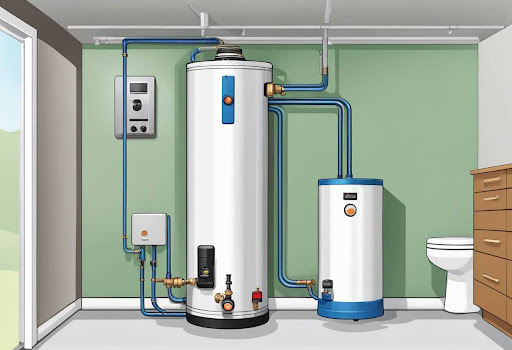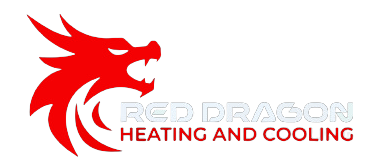- 518.348.9000
- [email protected]
- 117 Van Rd Gloversville,NY 12078
Gas Water Heater: Key Benefits and Maintenance Tips Test
Gas water heaters continue to be a reliable choice for many households due to their efficiency and quick heating capabilities. A gas water heater can provide hot water almost instantaneously, minimizing the wait time and ensuring that your daily routines are uninterrupted.
These appliances come in various sizes and models, catering to different household needs and preferences. Modern gas water heaters are designed with advanced safety features and energy-saving options, making them a practical choice for today’s energy-conscious homeowners.
Understanding the benefits and options available can help you make an informed decision on selecting the best gas water heater for your home. The following sections will provide insights into the different types, features, and considerations to keep in mind when choosing a gas water heater.

518 Red Dragon Service Areas Include :

Amsterdam
Amsterdam Gas Water Heater

Gloversville
Gloversville Gas Water Heater

Johnstown
Johnstown Gas Water Heater

Broadalbin
Broadalbin Gas Water Heater

Fonda
Fonda Gas Water Heater
Mayfield
Mayfield Gas Water Heater
Northville
Northville Gas Water Heater

Understanding Gas Water Heaters
Gas water heaters are essential for providing hot water efficiently and safely. They come in various types and work through well-defined mechanisms. Understanding their key components and functionality helps in making informed decisions.
Types of Gas Water Heaters
There are two main types: storage tank and tankless. Storage tank heaters keep a reserve of hot water in an insulated tank. They’re available in various sizes and provide a steady supply of hot water.
Tankless heaters, on the other hand, heat water on demand. This means they only operate when hot water is needed, which can be more energy-efficient. Both types have their own advantages depending on your water usage and energy efficiency needs.
How Gas Water Heaters Work
Gas water heaters use a burner located at the bottom of a tank, fueled by natural gas or propane. Cold water is fed into the tank and heated by the burner. Once heated, the water rises to the top where it’s drawn off for use.
Tankless models heat water directly through a heat exchanger. When a hot water tap is turned on, gas burners ignite and water is instantaneously heated as it flows through the unit. This ensures a continuous supply of hot water without the need for storage.
Key Components and Functionality
Storage tank heaters consist of a thermostat, burner, dip tube, anode rod, and pressure relief valve. The thermostat controls the water temperature. The burner heats the water. The dip tube directs incoming cold water down to the bottom of the tank where it can be heated. The anode rod helps prevent tank corrosion.
Tankless heaters have a heat exchanger, flow sensor, and gas valve. The heat exchanger rapidly heats the water. The flow sensor detects when hot water is needed and the gas valve opens to ignite the burners. With no tank to store water, these components work together to provide hot water on demand efficiently.
Understanding these components is crucial for maintenance and ensuring optimal performance of the water heater.
Installation and Maintenance
Proper installation ensures efficient heating and long-term reliability of a gas water heater. Regular maintenance can prevent common issues and extend the lifespan of the unit.
Safety Guidelines for Installation
When installing a gas water heater, secure all connections tightly to prevent gas leaks. Always use a flexible gas line.
Ensure the installation area is well-ventilated. This prevents buildup of toxic fumes.
Check for proper venting:
- Avoid obstructions in the vent pipe.
- Use approved venting materials.
Place the heater on a stable, non-combustible surface. Install a temperature and pressure relief valve to prevent excessive pressure buildup.

Routine Maintenance Tips
Regular maintenance prolongs the heater’s life. Flush the tank annually to remove sediment buildup, which can cause inefficiency.
Inspect the anode rod every few years. Replace if heavily corroded to protect the tank from rusting.
Check gas lines and connections for leaks. Tighten if necessary.
Test the temperature and pressure relief valve to ensure it works properly. If it discharges water constantly, it may need replacement.
Troubleshooting Common Issues
Common issues include no hot water, insufficient hot water, or strange noises.
If there’s no hot water, check the pilot light. If it’s out, relight it following the manufacturer’s instructions.
For insufficient hot water, adjust the thermostat to ensure the set temperature is adequate.
Strange noises, such as popping or rumbling, usually indicate sediment buildup. Flush the tank to resolve this issue.
If you detect a gas smell, turn off the gas supply immediately and consult a professional.
WHAT WE DO
Expert HVAC Care, Always.


Residential Installations
Trust us to transform your space into a haven of perfect climate control with our expert HVAC installations.

Commercial Installations
Trust us to transform your space into a haven of perfect climate control with our expert HVAC installations.

Thermostat Installations
Trust us to transform your space into a haven of perfect climate control with our expert HVAC installations.

Air Quality Solutions
Trust us to transform your space into a haven of perfect climate control with our expert HVAC installations.
